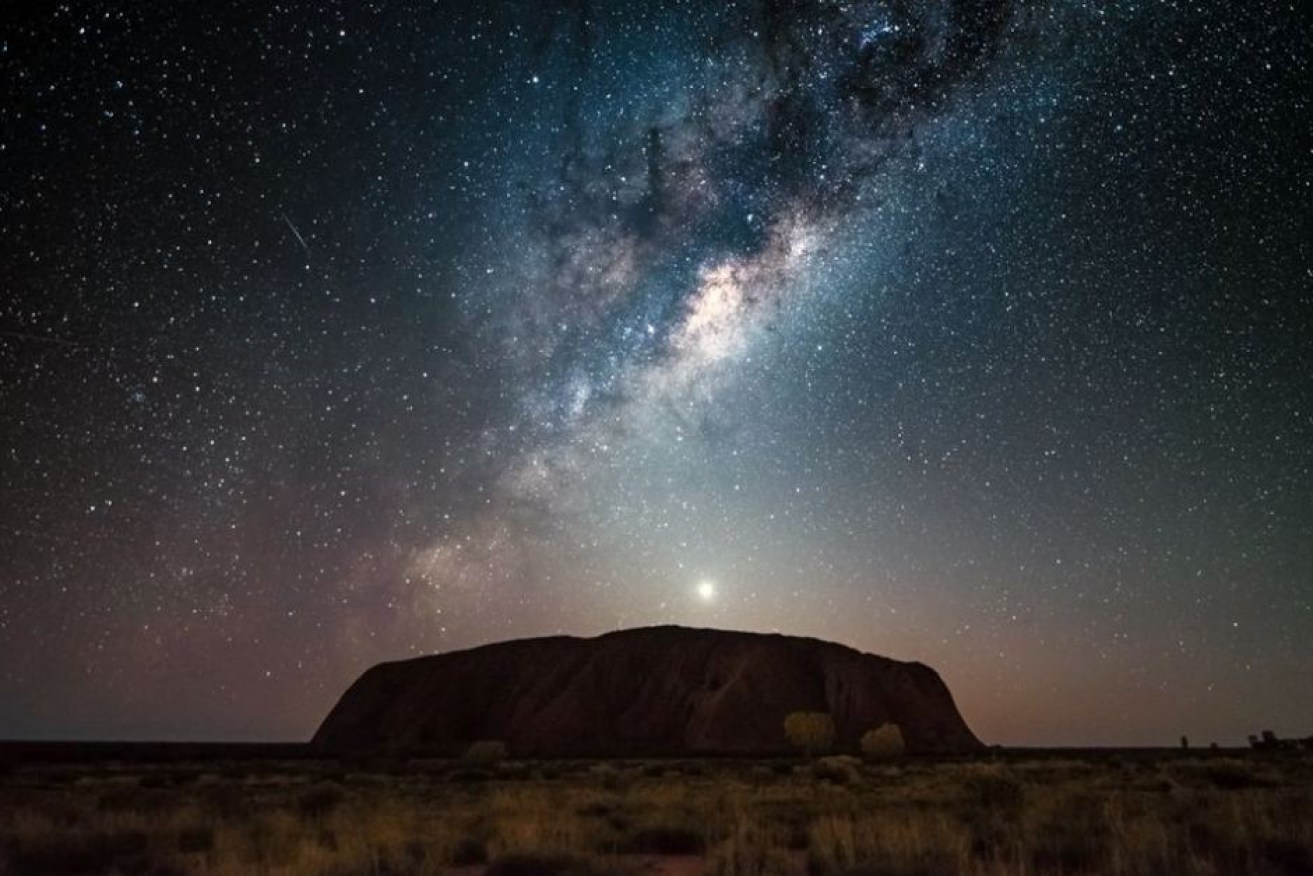From the outback to the galaxy, space balloons launched to study the Milky Way

Uluru under the Milky Way. Photo: ABC
Early risers in Alice Springs were treated to an unusual surprise in the sky on Sunday morning.
As the yolky desert sun broke over the outback town, a thin, helium-filled white balloon about the size of a football oval could be seen floating over The Gap.
Unbeknownst to many, it was on its way to the outer reaches of the Earth’s atmosphere, around 39 kilometres above the ground.
“The purpose is to find out what is going on in the centre of our galaxy,” Professor Ravi Sood, director of the Balloon Launching Station at Alice Springs Airport, said.
For more than 40 years the Alice Springs Balloon Launching Station, a NASA-owned facility managed by the CSIRO, has been launching payloads to altitudes of up to 40 kilometres, placing them above 99 per cent of the Earth’s atmosphere.
Here, they quite literally “touch the edge of space”.
The project, a joint mission between the Japanese Space Agency (JAXA) and the CSIRO, is taking place over the first half of the year, and is the culmination of decades of research.

JAXA prepares to launch the multi-million-dollar helium balloon. Photo: Marc Woods/ABC
“To get it to the top of the atmosphere you need a very large balloon, this balloon is about half a million cubic meters in volume, and spans about 105 meters wide,” Professor Sood said.
Conditions must be “just right” to launch the scientific balloons, which gather crucial information about gamma rays emanating from the centre of the galaxy.
Once the balloons are launched they use sensitive space telescopes and atmospheric survey instruments, which can weigh up to 600 kilograms, to study the galaxy.
“This type of detector measures gamma ray’s with very high precision, coming from the centre of our galaxy,” Professor Sood said.
Research could help understand black holes
Professor Sood said the launching site of the space balloons was no accident. Rather, it was chosen because Central Australia has a unique proximity to the Milky Way, which scientists are keen to study.
“The centre of our galaxy, the Milky Way Galaxy, is virtually overhead from Alice Springs,” Professor Sood said.
It is hoped that by unlocking the secrets of the Milky Way, scientists will have a better understanding of black holes, where matter is said to be thrust around with astonishing energy.
A team of about 43 astrophysicists and engineers from JAXA were in Alice Springs to take part in the mission.
However, it is not without its hazards.

The balloons are part of a joint exercise between the CSIRO and JAXA. Photo: Marc Woods/ABC
In 2010, a similar exercise left observers “running for their lives” after a balloon went off course and smashed into a parked car, terrifying a local couple who had turned out to watch the launch.
Professor Sood said the joint mission would launch two more balloons this year, depending on the conditions.
“[Scientists] have to wait for the winds to be favourable so the balloon can travel into the atmosphere, before landing 24 hours later in Longreach, central Queensland,” Professor Sood said.
-ABC








